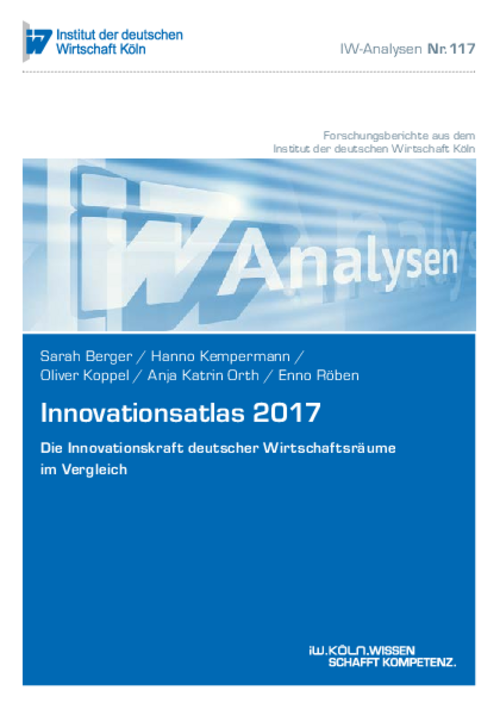In Germany, there is a close link between R & D expenditures and employment of STEM graduates to successful patent applications. This chain of effects can be shown to exist both at the federal and regional level. Furthermore, virtually every indicator of innovation-related power exhibits a considerable southnorth, west-east, and urban-rural divide.

Innovationsatlas 2017
IW-Analyse

In Germany, there is a close link between R & D expenditures and employment of STEM graduates to successful patent applications. This chain of effects can be shown to exist both at the federal and regional level. Furthermore, virtually every indicator of innovation-related power exhibits a considerable southnorth, west-east, and urban-rural divide.
The huge lead maintained by the southern German states (Laender) remains very pronounced even after adjusting for the degree of agglomeration. Of the 85 economic areas defined by far the most innovative are the few centred on Munich, Stuttgart and Wolfsburg. These automotive-driven top clusters have enabled Germany to achieve the goal set in the year 2000 of investing 3 per cent of its economic output in R & D. However, three in four economic areas still fall short of this target. Those around Dresden and Jena are the only positive exceptions to a general innovation weakness in eastern Germany. The major challenge for Germany is to continue catching up with the global leaders in an increasingly intense research, development and innovation race. To achieve this goal, policymakers must improve the business environment so as to enable significant progress in the field of innovation, particularly in rural and eastern German economic areas.

Sarah Berger / Hanno Kempermann / Oliver Koppel / Anja Katrin Orth / Enno Röben: Innovationsatlas 2017 – Wo Deutschlands Ideen entstehen
IW-Analyse

More on the topic

The Transformation of the Automotive Industry: An International Comparison of Germany's Innovation Performance
The automotive industry is undergoing a comprehensive technological transformation that is challenging established value chains. Making sure that domestic research helps to shape this ongoing transformation is therefore an important task for countries with a ...
IW
Innovation Atlas 2023: The innovative strength of the German regions
All indicators of innovative strength in Germany – from research intensity and scientific and technical employment structures to patent successes – point to a strong south-north, west-east and urban-rural divide.
IW